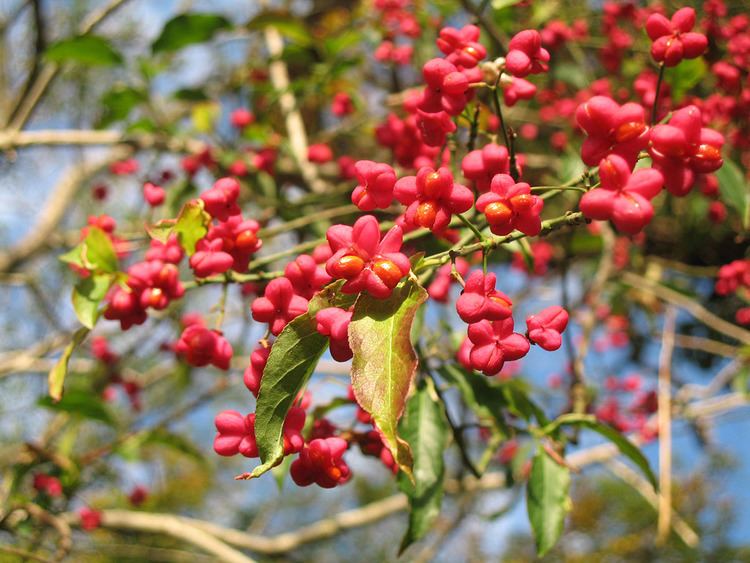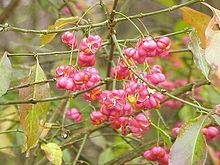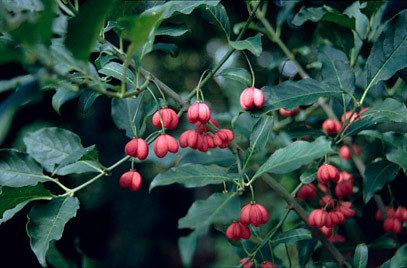Rank Species | Genus Euonymus | |
 | ||
Similar Spindle tree, Cornus sanguinea, Field maple, Ligustrum vulgare, Frangula alnus | ||
Myautumn spindle euonymus europaeus
Euonymus europaeus (spindle, European spindle, common spindle) is a species of flowering plant in the family Celastraceae, native to much of Europe, where it inhabits the edges of forest, hedges and gentle slopes, tending to thrive on nutrient-rich, chalky and salt-poor soils. It is a deciduous shrub or small tree. Other names include fusoria, fusanum, ananbeam, shemshad rasmi (Iran), while it may have given its name to the ancient Greek settlement of Euonymeia.
Contents
- Myautumn spindle euonymus europaeus
- Euonymus europaeus
- Description
- Cultivation and uses
- Synonyms
- References

Euonymus europaeus
Description

Euonymus europaeus grows to 3–6 m (10–20 ft) tall, rarely 10 m (33 ft), with a stem up to 20 cm (8 in) in diameter. The leaves are opposite, lanceolate to elliptical, 3-8 cm long and 1-3 cm broad, with a finely serrated edge. Leaves are dark green in summer. Fall color ranges from yellow-green to reddish-purple, depending on environmental conditions.

The hermaphrodite flowers are produced in late spring and are insect-pollinated; they are rather inconspicuous, small, yellowish green and grow in cymes of 3-8 together. The capsular fruit ripens in autumn, and is red to purple or pink in colour and approximately 1-1.5 cm wide. When ripe, the four lobes split open to reveal the orange seeds.
Cultivation and uses

It is a popular ornamental plant in gardens and parks due to its bright pink or purple fruits and attractive autumn colouring, in addition to its resistance to frost and wind. It has been introduced to North America where it has become an invasive species in some areas. The cultivar 'Red Cascade' has gained the Royal Horticultural Society's Award of Garden Merit.
European spindle wood is very hard, and can be cut to a sharp point; it was used in the past for making wool spindles.
Parts of the plant have been used medicinally. However, the fruit is poisonous, containing, amongst other substances, the alkaloids theobromine and caffeine, as well as an extremely bitter terpene. Poisonings are more common in young children, who are enticed by the brightly coloured fruits. Ingestion can result in liver and kidney damage and even death.
